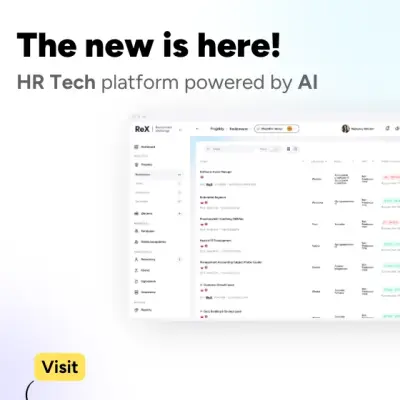Employee Onboarding – What It Is and How to Do It Right
Table of contents
Lack of support, structure, and feedback are among the most common onboarding mistakes made by Polish companies. These shortcomings lead to frustration and increased employee turnover. A well-designed onboarding process is more than just a welcome – it’s a powerful tool for building loyalty, efficiency, and engagement. In this article, we’ll walk you through how to implement an effective onboarding process step by step.
What Is Employee Onboarding?
Onboarding is the process of integrating a new employee into the company. It includes providing the knowledge and tools needed to start working efficiently.
The experience during the first day, week, or month significantly influences whether the new hire decides to stay, engage, and become productive. If they encounter chaos from the beginning – an unprepared workstation, delayed system access, or unclear expectations – they’re likely to disengage quickly.
A good onboarding process is not just about handing over instructions and system access. A new employee should know what to do, who to turn to, and what their role within the team entails. Without genuine support at the outset, engagement is unlikely to follow.
Onboarding is no time for improvisation. It’s the foundation for building trust and a sense of belonging – both essential for long-term retention.
Preboarding vs. Onboarding
Though often used interchangeably, preboarding and onboarding refer to two distinct stages in integrating a new hire. Preboarding begins as soon as the employment contract is signed – before any duties are performed – and helps shape the new employee’s first impression of the company.
Onboarding begins on the employee’s first working day and focuses on translating recruitment promises into real-life experiences.
Preboarding – What to Prepare Before Day One
- Welcome package – Include a welcome letter from the CEO or manager, the first day and week agenda, a contact list, practical information (e.g., how to get to the office, working hours, dress code), a brief description of company culture, branded materials (e.g., notebook, pen, power bank, mug), and an invitation to lunch or a team meeting.
- Introductory meeting – Organise a 15–30 minute meeting (online or in-person) with the future team before the employee’s start date. Ideally, the direct manager and onboarding buddy should attend.
- Organisational information – Send an email before the first day with precise logistics: what to bring, where to arrive (office address, floor, room), who will be waiting (name, contact number), and where to park. This greatly simplifies the process!
Onboarding – How to Ensure the First Day Isn’t the Last
- Job-specific training – Create a checklist of tasks for the first week, provide tool usage instructions, and share short video tutorials or presentations on key processes. Assign someone to walk the new hire through the main activities.
- Introducing company culture – Present core values using real-life examples: how decisions are made, how daily communication works, what behaviours are valued (e.g., proactivity, feedback), and which should be avoided (e.g., ignoring team agreements or failing to give feedback).
- Team integration – On day one, plan a coffee break, lunch, or informal team meeting with the new hire. Allow time for short 1:1 chats with team members.
- Support and feedback – At the end of the first day, hold a brief check-in meeting. Ask for first impressions, answer onboarding-related questions, and ensure the new hire knows whom to contact with any issues.
Why Is Onboarding Important?
A staggering 26% of companies are unable to define their turnover rate (Antal report: Employer Branding in 2025). A lack of data often indicates a lack of control, which can lead to costly staffing mistakes – mistakes that could be avoided through a solid onboarding strategy.
A strong onboarding program significantly increases the likelihood that a new hire will become productive more quickly and stay longer.
Companies that provide mentoring, regular feedback, and strong team connections report higher engagement and loyalty. On the other hand, the absence of an onboarding structure leads to confusion and higher attrition, often before a new hire has a chance to show their potential.
Onboarding’s Role in Employer Branding
When a candidate enters a work environment that doesn’t match the expectations set during recruitment, it damages the employer brand’s credibility.
If flexibility is promised, but the reality is rigid management and a lack of openness, trust in the company erodes. If the company promotes a close-knit team, yet no one even says hello – the employer image crafted by HR quickly crumbles.
The Four Stages of Employee Onboarding
Each stage – from signing the contract to reaching complete independence – should be thoughtfully planned and consistently executed.
Stage 1: Compliance
This is the administrative foundation. The employee receives information about documentation processes, occupational health exams, safety procedures, and reporting systems. Clarity and transparency are key – not to drown in regulations, but to understand how the company operates technically and procedurally.
Stage 2: Clarification
The employee begins to understand their role. This stage clarifies responsibilities, individual and team goals, and company objectives. It’s also about setting a timeline – what should happen in the first week, month, and quarter.
Stage 3: Culture
This is where the “how we work here” becomes clear – how decisions are made, how people communicate, and what values matter, not just in presentations but in daily work as well. It’s a chance to showcase the informal side of the company – team rituals, integration initiatives, and how successes are celebrated.
Stage 4: Connection
Effective onboarding goes beyond knowledge transfer. This is about building relationships – understanding the org chart in practice, who is responsible for what, and how cross-functional teams work. It’s also the start of navigating informal networks – the glue that holds the organization together.
It’s not just about joining a company – it’s about feeling like you truly belong.
How to Run an Effective Onboarding Process
Effective onboarding isn’t instinctive and goes far beyond a simple welcome. It requires planning, clear communication, and involvement from multiple stakeholders – not just the HR department.
A new employee must know from day one what to expect and where to turn for help. A well-structured onboarding process demonstrates whether the company’s promises to candidates hold up in reality.
Preparation
Before the first day, ensure all logistics are covered, including workstation setup, system access, and equipment configuration. Create a clear onboarding plan and assign a buddy or mentor who understands their role.
Communication
Silence is demotivating. Schedule several touchpoints – not just formal meetings but also open spaces for questions and informal conversation. Regular feedback accelerates adaptation, and quick responses to concerns build trust. An employee who feels heard is more likely to engage.
Training
Tailor training to the employee’s experience and role. Beyond systems and tools, include content such as cross-functional collaboration, communication standards, and feedback culture.
Integration
Proper onboarding isn’t just about process – it’s about people. Relationships matter from day one. A coffee chat, team lunch, or invitation to a cross-departmental project can quickly foster a sense of belonging.
Common Onboarding Pitfalls to Avoid
Onboarding is not just what a company does – it’s also what it intentionally avoids to prevent discouraging new hires early on. Some mistakes may seem small but can have serious consequences – from low motivation to premature resignations.
Lack of structure is the first red flag. When a new hire doesn’t know what to do, whom to ask, or what’s expected, frustration and a sense of wasted time follow.
Information overload is another common issue. Flooding a new hire with data without context or prioritisation can hinder rather than help them.
Lack of support – when left alone, a new employee loses their sense of security. The mentor or manager must be genuinely available, not just in theory.
Ignoring feedback – failing to listen to a new hire, especially during the first weeks - sends a message that their perspective doesn’t matter.
Avoid this onboarding scenario:
“I got an email with my start date and that was it. I arrived at the office, and no one was expecting me. The receptionist had no idea that a new person was joining. I sat in the hallway for half the day. No plan, no team contact. At the end, someone told me: ‘Tomorrow everything should be sorted.’ But by then, I already knew I didn’t want to stay.”
Aim for this instead:
“A week before I started, I received an email from HR with the agenda for my first days, a contact list, and a short video introducing the team. On my first day, my onboarding buddy greeted me. My equipment was ready, and I had access to all systems. I attended planned meetings with department heads and the team. Within a few hours, I understood what was expected of me and what the next steps in onboarding would look like. Everything was organized and thoughtful.”
Final Thoughts
The first days and weeks – often underestimated – determine whether a new employee feels they’ve made a good decision or a mistake by joining the company.
It’s not about flashy initiatives or creative office gadgets – it’s about consistency between what the company says and how it behaves. About being present and ready to listen when it matters most.
Onboarding isn’t just an introduction. It’s the first step in a trust-based relationship. When done right, it can determine whether someone stays for a while – or years.
Onboarding Checklist
Before the Start Date (Preboarding)
☐ Create an individual onboarding plan (in collaboration with the team manager)
☐ Prepare a welcome package (e.g., letter, branded gifts, information materials)
☐ Send the day-one agenda and practical info (start time, dress code, location, contact person)
☐ Secure the workstation – access credentials, equipment, email, ID badge
☐ Collect necessary documents (contract, GDPR forms, medical exam referral, social security data)
☐ Assign a buddy or mentor and ensure they understand their role
First Day
☐ Greet the employee in person or online
☐ Review administrative procedures and internal policies
☐ Introduce company structure and values
☐ Provide system access, logins, access cards, and basic tech instructions
☐ Explain remote work policy, leave procedures, benefits
☐ Clarify who to contact in case of issues
☐ Onboard the employee to communication tools (Slack, Teams, Intranet)
First Week
☐ Schedule mandatory and role-specific training
☐ Check in on employee satisfaction
☐ Monitor buddy/mentor involvement
☐ Organize a team meeting or integration event
First Month
☐ Hold a feedback meeting with the employee and manager
☐ Collect onboarding feedback
☐ Ensure completion of all mandatory training
First 90 Days
☐ Prepare an internal onboarding summary
☐ Align on development plans and next steps with the manager
☐ Analyze onboarding data (ramp-up time, attrition, satisfaction, feedback)
☐ Identify areas for improvement in future onboarding














